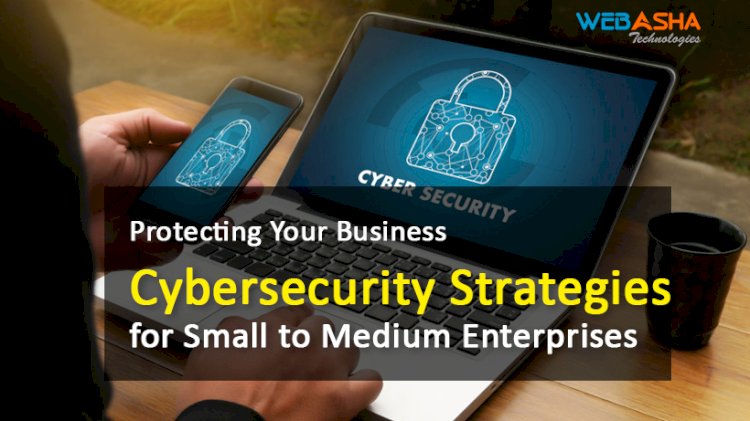Protecting Your Business: Cybersecurity Strategies for Small to Medium Enterprises
Explore comprehensive cybersecurity strategies tailored for small to medium enterprises (SMEs). Learn how to protect your business from cyber threats with risk assessments, employee training, secure networks, data backup plans, and incident response strategies.

In today's interconnected world, small to medium enterprises (SMEs) have become prime targets for cyberattacks. The digital landscape presents both opportunities and risks, making robust cybersecurity strategies essential for the survival and growth of businesses. In this comprehensive guide, we delve into the realm of cybersecurity for SMEs, offering insights, strategies, and expert advice to safeguard your business from evolving cyber threats.
Introduction: The Rising Threat Landscape for SMEs
SMEs are the backbone of economies, contributing significantly to growth and innovation. However, their size often leaves them vulnerable to cyberattacks. As businesses increasingly rely on digital processes, the potential for data breaches, ransomware attacks, and financial fraud becomes a real concern.
Understanding Cybersecurity for SMEs: A Complex Landscape
Effective cybersecurity for SMEs involves more than just installing antivirus software. It's a comprehensive approach that encompasses technology, policies, training, and a proactive mindset. Cybersecurity strategies should be tailored to the unique challenges faced by SMEs, which often have limited resources compared to larger enterprises.
1. Conducting a Risk Assessment
Begin by assessing the specific risks your business faces. Identify critical assets, potential vulnerabilities, and the impact of a cyber incident. This helps you prioritize your cybersecurity efforts and allocate resources effectively.
2. Implementing Robust Access Controls
Limit access to sensitive data and systems based on the principle of least privilege. Ensure that only authorized personnel have access to critical information, and regularly review and update permissions.
3. Employee Training and Awareness
SMEs are often targeted through their employees. Provide regular training on cybersecurity best practices, including recognizing phishing emails, secure password management, and safe internet browsing.
4. Secure Network Infrastructure
Invest in a reliable firewall, intrusion detection systems, and encryption mechanisms to protect your network from unauthorized access. Segment your network to contain potential breaches and limit lateral movement.
5. Regularly Update and Patch Systems
Outdated software and systems are vulnerable to exploits. Establish a process for timely updates and patches to keep your technology stack secure.
6. Secure Remote Work Environments
With the rise of remote work, secure remote access is crucial. Implement Virtual Private Networks (VPNs), multi-factor authentication (MFA), and secure communication tools to protect remote workers and data.
7. Data Backup and Recovery Plans
Regularly back up your business-critical data and ensure backups are stored securely offsite. Having a robust data recovery plan in place minimizes downtime in the event of a cyber incident.
8. Vendor and Supply Chain Risk Management
Assess the security practices of your vendors and partners. A breach at a third-party supplier can have cascading effects on your business.
9. Incident Response Planning
Develop a comprehensive incident response plan outlining steps to take in case of a cyber incident. Test the plan through simulations to ensure its effectiveness.
10. Engaging Cybersecurity Professionals
If resources allow, consider hiring cybersecurity experts or partnering with managed security service providers (MSSPs) to help bolster your defense mechanisms.
Conclusion: Securing the Future of Your SME
In a digital era where cyber threats are constantly evolving, the importance of cybersecurity for SMEs cannot be overstated. A breach could lead to reputational damage, financial loss, and even the demise of your business. By implementing a proactive cybersecurity strategy tailored to your SME's needs, you can effectively mitigate risks and secure your business's future.
Remember that cybersecurity is an ongoing journey. Stay informed about the latest threats and trends, adapt your strategies accordingly, and foster a culture of security within your organization. By prioritizing cybersecurity, you not only protect your business but also contribute to a safer digital ecosystem for all.











![Top 10 Ethical Hackers in the World [2025]](https://www.webasha.com/blog/uploads/images/202408/image_100x75_66c2f983c207b.webp)

![[2025] Top 100+ VAPT Interview Questions and Answers](https://www.webasha.com/blog/uploads/images/image_100x75_6512b1e4b64f7.jpg)









